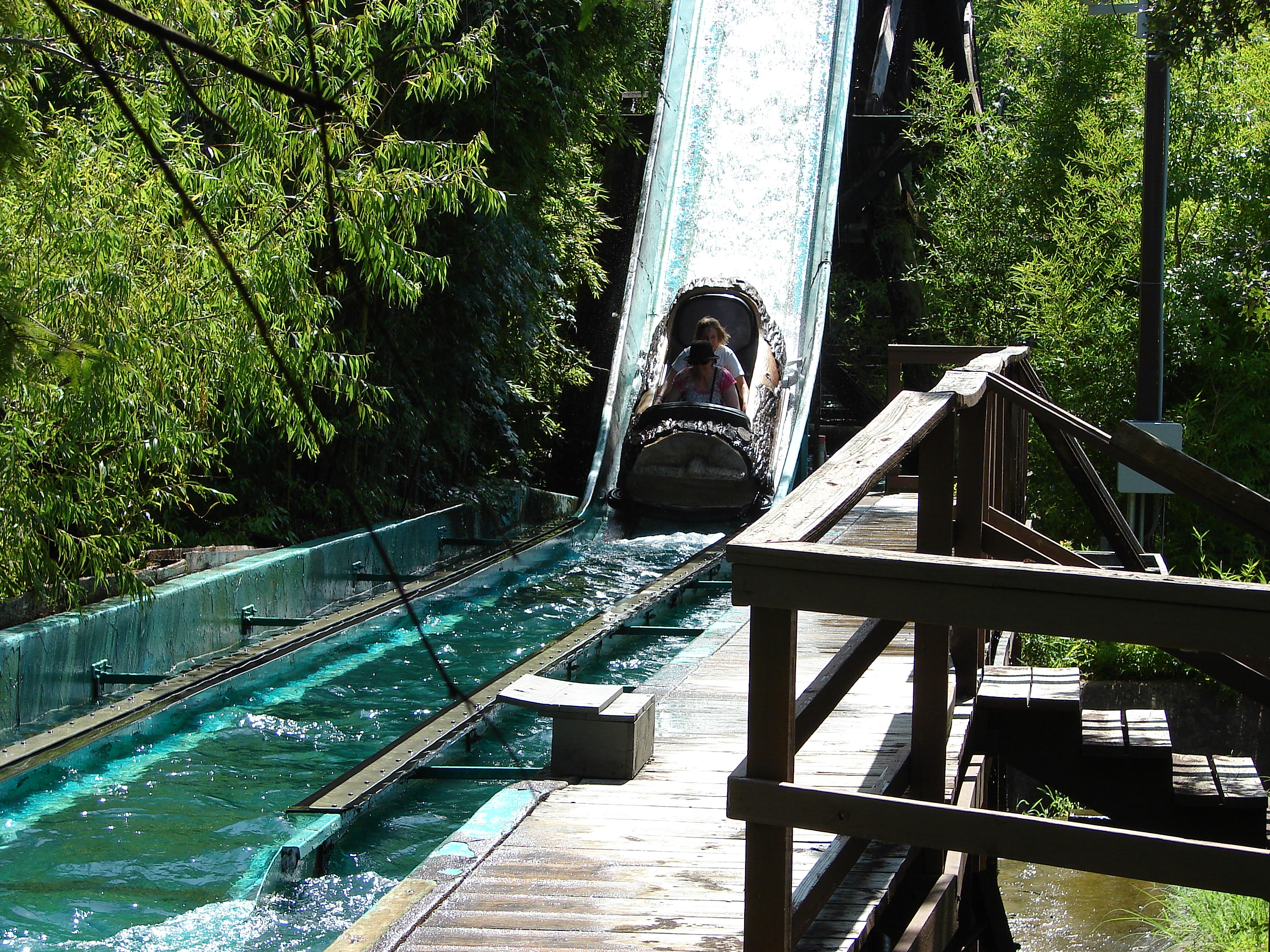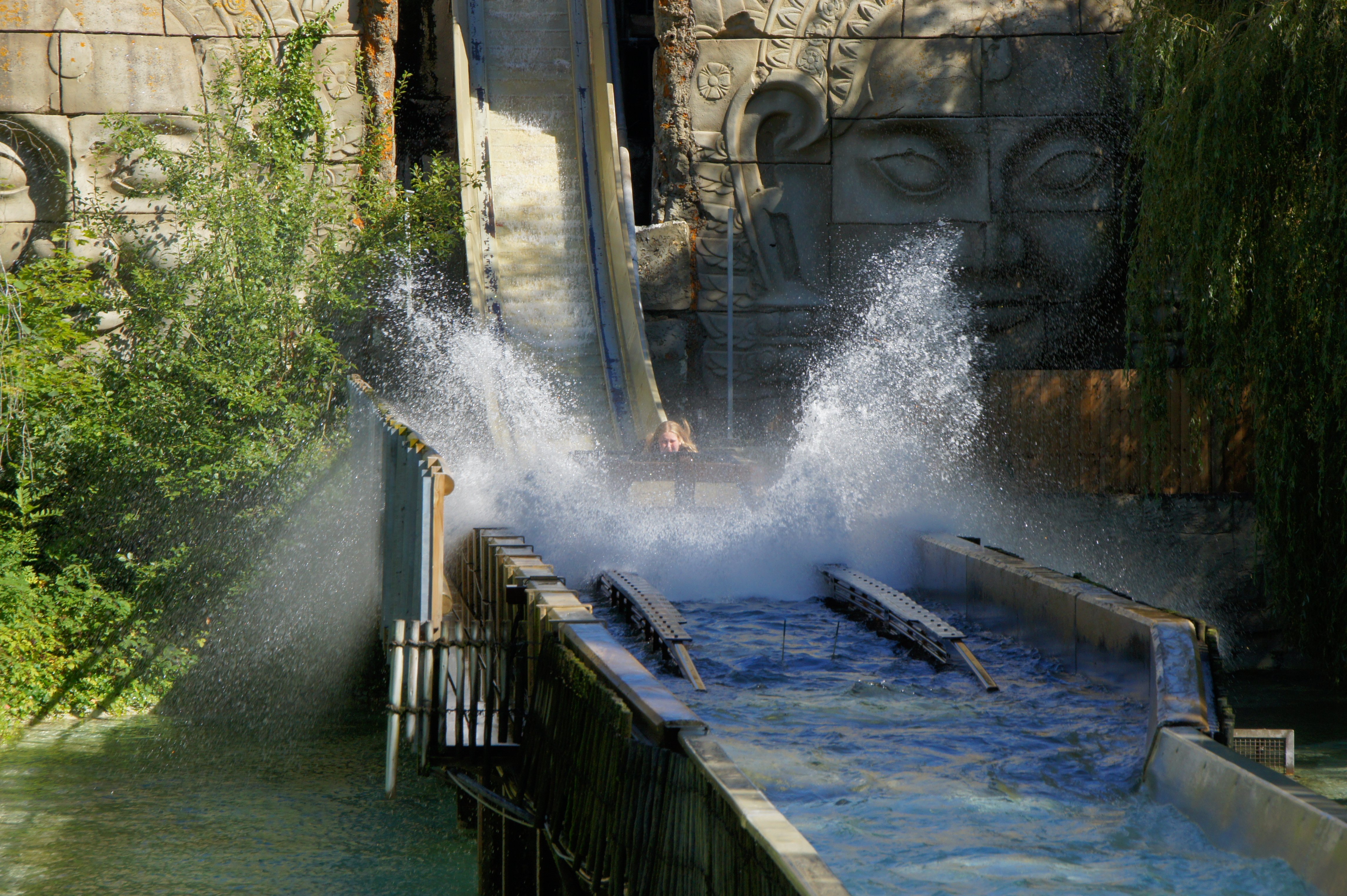|
El Aserradero
El Aserradero (meaning The Sawmill) is a log flume located in the ''Spain'' section at Six Flags Over Texas in Arlington, Texas, since 1963. History 'El Aserradero' was the first ever log flume attraction in the world and the fourth oldest ride currently operating at the park, built by Arrow Development, which later became Arrow Dynamics. The log flume replaced the 'Burro Ride', which operated from 1961 to 1962. From 1963 to 1968, El Aserradero only operated one flume. Then in 1968, due to the ride's popularity, Six Flags added a second flume to next to the original doubling the capacity of the attraction. The park billed the ride as "the most popular and exciting ride ever devised." During the 1970s, Six Flags Over Texas added themed animations along the ride in which Lumberjacks could be seen sawing logs. Also added was a cover to the drop on flume 2, which later was removed along with the animations. El Aserradero's success inspired many amusement parks around the world to ... [...More Info...] [...Related Items...] OR: [Wikipedia] [Google] [Baidu] |
Six Flags Over Texas
Six Flags Over Texas is a 212-acre (86 ha) amusement park, in Arlington, Texas, east of Fort Worth, Texas, Fort Worth and west of Dallas, Texas, Dallas. It is the first amusement park in the Six Flags chain, and features themed areas and attractions. The park opened on August 5, 1961, after a year of construction and an initial investment of United States dollar, US$10 million by real estate developer Angus G. Wynne, Angus G. Wynne, Jr. The park is managed by the Six Flags Entertainment Corp., which owns a 54% interest of the Texas Limited Partnership that owns the park. Six Flags Over Texas Fund, Ltd, a private-equity and asset-management firm, headed by Dallas businessman Jack Knox, bought the park in 1969. Over the years, the various companies that managed the park exercised options to purchase interest in the fund. Six Flags Entertainment has an option to purchase the remaining 46% in 2028. In 1991, Time Warner Entertainment began managing park operations. In 1998, Time Warner ... [...More Info...] [...Related Items...] OR: [Wikipedia] [Google] [Baidu] |
Lumberjack
Lumberjacks are mostly North American workers in the logging industry who perform the initial harvesting and transport of trees for ultimate processing into forest products. The term usually refers to loggers in the era (before 1945 in the United States) when trees were felled using hand tools and dragged by oxen to rivers. The work was difficult, dangerous, intermittent, low-paying, and involved living in primitive conditions. However, the men built a traditional culture that celebrated strength, masculinity, confrontation with danger, and resistance to modernization. Terminology The term lumberjack is of Canadian derivation. The first attested use of the word comes from an 1831 letter to the ''Cobourg Star and General Advertiser'' in the following passage: "my misfortunes have been brought upon me chiefly by an incorrigible, though perhaps useful, race of mortals called lumberjacks, whom, however, I would name the Cossack's of Upper Canada, who, having been reared among th ... [...More Info...] [...Related Items...] OR: [Wikipedia] [Google] [Baidu] |
Water Rides
Water rides are amusement rides that are set over water. For instance, a log flume travels through a channel of water to move along its course. Notable types *AquaLoop *Bumper boats * Fishpipe * FlowRider *Lazy river *Log flume *Old Mill *River caves *River rapids ride *Shoot the Chute *Tornado * Tow boat ride * Water coaster *Water slide Notable examples *Journey to Atlantis * Jurassic Park: The Ride *Pirates of the Caribbean * Thunder River *Timber Mountain Log Ride *Splash Mountain Splash Mountain is a log flume at Disneyland, Tokyo Disneyland, and Magic Kingdom, based on the animated sequences of the 1946 Disney film ''Song of the South''. Although there are variations in the story and features between the three locatio ... {{DEFAULTSORT:Water Ride ... [...More Info...] [...Related Items...] OR: [Wikipedia] [Google] [Baidu] |
Amusement Rides Introduced In 1963
Amusement is the state of experience, experiencing humour, humorous and entertainment, entertaining events or situations while the person or animal actively maintains the experience, and is associated with enjoyment, happiness, laughter and pleasure. It is an emotion with positive valence and high physiological arousal. Amusement is considered an "epistemological" emotion because humor occurs when one experiences a cognitive shift from one knowledge structure about a target to another, such as hearing the punchline of a joke. The pleasant surprise that happens from learning this new information leads to a state of amusement which people often express through smiling, laughter or chuckling. Current studies have not yet reached consensus on the exact purpose of amusement, though theories have been advanced in the fields of psychology, psychiatry, and sociology. In addition, the precise mechanism that causes a given element (image, sound, behavior, etc.) to be perceived as more or ... [...More Info...] [...Related Items...] OR: [Wikipedia] [Google] [Baidu] |
Log Flume (ride)
Log flumes (colloquially known as log rides) are amusement rides consisting of a water flume and (artificial) hollow logs or boats. Passengers sit in the logs, which are propelled along the flume by the flow of water. The ride usually culminates with a rapid descent and splashdown into a body of water, which may happen more than once (normally the largest drop being just before the end). It provides people with an entertaining way to get wet and cool off on a hot summer day, with certain seating sections usually being splashed with more water for a more fun and wet ride. History Log flumes are a variant of the chute rides and Old Mill (ride), old mill rides that were popular in the United States in the early 20th century. Shoot the Chute rides continue to be built today. Both of these types of rides took rather simple approaches to handling water flow. It was not until Karl Bacon of Arrow Dynamics, Arrow Development got involved and studied hydrodynamics that the use of wate ... [...More Info...] [...Related Items...] OR: [Wikipedia] [Google] [Baidu] |
Six Flags Fright Fest
Fright Fest (also known as Festival Del Terror at Six Flags México) is a Halloween-oriented haunt event held annually at Six Flags theme parks in the United States, Canada, and Mexico. It mainly features haunted attractions, themed areas named ''Scare Zones'', and live entertainment. It opened as Fright Nights at Six Flags AstroWorld in 1986. In 2020, Fright Fest was reimagined to Hallowfest, due to the COVID-19 pandemic. History Fright Nights era (1986-1993) After testing various Halloween-based seasonal events throughout the 1970s to mid-1980s, Six Flags, then owned by Bally Manufacturing, created an all-new Halloween event for AstroWorld in 1986 that they named ''Six Flags Fright Nights''. In 1987, the event began to be expanded to Six Flags' other properties. Six Flags Over Georgia was the second park to introduce the event. Six Flags Over Mid-America was the third park to introduce Fright Nights in 1988 with Freddy Krueger from ''A Nightmare on Elm Street'' as the eve ... [...More Info...] [...Related Items...] OR: [Wikipedia] [Google] [Baidu] |
Conveyor Belt
A conveyor belt is the carrying medium of a belt conveyor system (often shortened to belt conveyor). A belt conveyor system is one of many types of conveyor systems. A belt conveyor system consists of two or more pulleys (sometimes referred to as drums), with a closed loop of carrying medium—the conveyor belt—that rotates about them. One or both of the pulleys are powered, moving the belt and the material on the belt forward. The powered pulley is called the drive pulley while the unpowered pulley is called the idler pulley. There are two main industrial classes of belt conveyors; Those in general material handling such as those moving boxes along inside a factory and bulk material handling such as those used to transport large volumes of resources and agricultural materials, such as grain, salt, coal, ore, sand, overburden and more. Overview Conveyors are durable and reliable components used in automated distribution and warehousing, as well as manufacturing and produ ... [...More Info...] [...Related Items...] OR: [Wikipedia] [Google] [Baidu] |
Six Flags
Six Flags Entertainment Corporation is an American amusement park corporation, headquartered in Arlington, Texas. It has properties in Canada, Mexico, and the United States. Six Flags owns the most theme parks and waterparks combined of any amusement-park company and has the seventh highest attendance in the world. The company operates 27 properties throughout North America, including theme parks, amusement parks, water parks, and a family entertainment center. In 2019, Six Flags properties hosted 32.8 million guests. Six Flags was founded in the 1960s and derived its name from its first property, Six Flags Over Texas. The company maintains a corporate office in Midtown Manhattan, and headquarters in Arlington, Texas. On June 13, 2009, the corporation filed for Chapter 11 bankruptcy protection because of crippling debt, which it successfully exited after corporate restructuring on May 3, 2010. History Origin The name "Six Flags" originally referred to the flags of the si ... [...More Info...] [...Related Items...] OR: [Wikipedia] [Google] [Baidu] |
Conveyor
A conveyor system is a common piece of mechanical handling equipment that moves materials from one location to another. Conveyors are especially useful in applications involving the transport of heavy or bulky materials. Conveyor systems allow quick and efficient transport for a wide variety of materials, which make them very popular in the material handling and packaging industries. They also have popular consumer applications, as they are often found in supermarkets and airports, constituting the final leg of item/ bag delivery to customers. Many kinds of conveying systems are available and are used according to the various needs of different industries. There are chain conveyors (floor and overhead) as well. Chain conveyors consist of enclosed tracks, I-Beam, towline, power & free, and hand pushed trolleys. Industries where used Conveyor systems are used widespread across a range of industries due to the numerous benefits they provide. * Conveyors are able to safely tra ... [...More Info...] [...Related Items...] OR: [Wikipedia] [Google] [Baidu] |
Arrow Dynamics
Arrow Dynamics was an American manufacturing and engineering company that specialized in designing and building amusement park rides, especially roller coasters. Based in Clearfield, Utah, the company was the successor to Arrow Development (1946–1981) and Arrow Huss (1981–1986), which were responsible for several influential advancements in the amusement and theme park industries. Among the most significant was tubular steel track, which provided a smoother ride than the railroad style rails commonly used prior to the 1960s on wooden roller coasters. The Matterhorn Bobsleds at Disneyland, built in 1959, was Arrow's first roller coaster project. In 1975, Arrow Development introduced the first corkscrew style track Corkscrew, at Knott's Berry Farm that sent riders through a series of corkscrews. Arrow created several other "firsts" over the years, introducing the first suspended roller coaster in almost a century, The Bat, in 1981, and the world's first "hypercoaster", Magnu ... [...More Info...] [...Related Items...] OR: [Wikipedia] [Google] [Baidu] |
Arrow Development
Arrow Development was an amusement park ride and roller coaster design and manufacturing company, incorporated in California on November 16, 1945, and based in Mountain View. It was founded by Angus "Andy" Anderson, Karl Bacon, William Hardiman and Edgar Morgan. Originally located at 243 Moffett Boulevard, it moved to a larger facility at 1555 Plymouth Street after Walt Disney Productions purchased one third of the business in 1960. Arrow also had offices at 820 Huff Avenue. By 1956, then secretary Bill Hardiman and Angus Anderson, then vice president,R. L. Polk U.S. Cities Directory for Mountain View, CA 1954 had sold their interests in Arrow to Wharton graduate Walter Schulze, who then became Arrow's secretary-treasurer and vice president. Schulze and his wife had provided accounting services for several small companies in the Bay Area, including Duro-Bond Bearing, which is where he likely heard of Arrow. Schulze left Arrow after its sale to Rio Grande Industries. In 1979, Ar ... [...More Info...] [...Related Items...] OR: [Wikipedia] [Google] [Baidu] |







